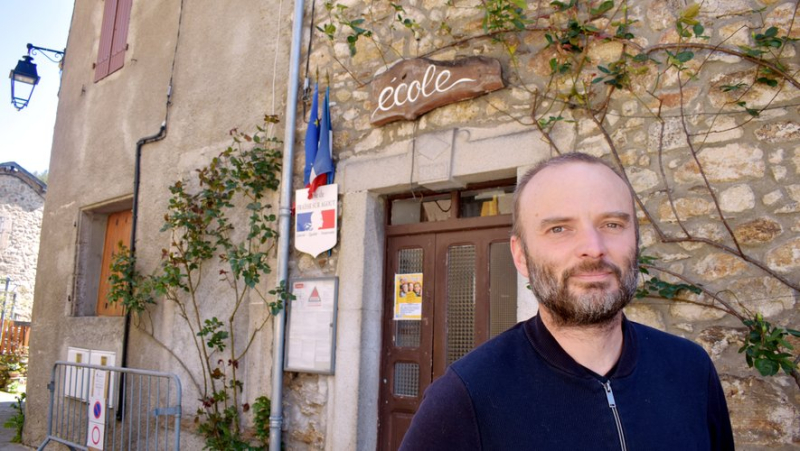Haut-Languedoc: tourists are good, residents are better

The Fraïsse-sur-Agout school could, at the start of the school year, lose one of its two classes. AJ-ML
More residents, fewer tourists, this is the political choice which now seems to be imposed on the small towns of the Béziers hinterland, which have more, even many more, secondary houses than housing occupied all year round. Jim Ronez, the mayor of Fraïsse-sur-Agout, is sounding the alarm.
According to the latest figures from INSEE, 70% of housing in Cambon-et-Salvergues, in the Béziers hinterland, are secondary houses. We could say that this is just an epiphenomenon affecting only a very small town with barely fifty inhabitants.< /p>
Except that this problem also affects neighboring villages, in particular the Hérault communes of the community of communes of the Monts de Lacaune and the Haut-Languedoc mountain: 67% for Le Soulié; 43 % Rosiness ; 46.6% Castanet-le-Haut; 64% La Salvetat-sur-Agout; 58 % Fraïsse-sur-Agout.
"We are reaching the end of this tourist reception policy"
For Jim Ronez, the mayor of the latter town, "this is too much. We are reaching the end of this tourist reception policy that we have pursued for more than fifty years." He continues, recalling however that tourism has brought activity and wealth to the commune and the inhabitants.
"For years, the town has highlighted its tourist assets, working to promote them, to attract visitors, with, among other things, the construction of a Campotel and municipal tourist lodges, l&rsquo ;development of a fishing route, obtaining various labels (green station, flower village…). These assets have generated private projects: the Espinouse inn, campsites, the Gaec Fontanelle… Secondary residential has developed greatly with this very favorable reception."
Then Jim Ronez's tone changes. "But all this was done to the detriment of the development of year-round reception capacity." And to indicate that today, in Fraïsse, there is nothing left to rent or sell. And the negative consequences begin to arise.
Three years ago, the school had 34 students for two classes. "This year, with 23 children, we were able to maintain both classes. But at the next school year, there will only be 17 students. If this is confirmed, we are closing a class and losing a teaching position"
Certainly, the number of inhabitants has been maintained for years, "but they are getting older, births are becoming more and more rare." For the moment, the town has its post office, a cabinet medical, a library… "But until when ?"
The mayor and his team therefore decided to work on housing, on year-round reception capacity. "Especially since we regularly have candidates for installation but we cannot respond to their request. They search, don't find, and go elsewhere."Thus, the town hall works in both the short and medium terms, particularly within the framework of the Village for the Future program to which it is a member. The Campotel and its 12 apartments, currently closed, and the six adjoining gîtes will no longer welcome tourists but will be renovated for year-round rentals. "We are in the process of buying a house to offer two apartments for rent."
The town hall, with the help of the Rural Territorial Balance Pole, the community of communes and the Public Land Establishment, began to approach the owners of vacant housing and second homes to encourage them to sell or rent. And this is just the beginning.
Rosis, Le Soulié, Castanet-le-Haut facing the same problem
Anne-Lise Sauterel, mayor of Rosis : " We are experiencing this housing crisis too. We have a lot of empty homes, second homes (43%) which are neither inhabited nor rented while we have strong demand all year round. The town hall only owns two tourist lodges, two apartments rented year-round and a house, currently being renovated, to be rented year-round. As for undeveloped land, our land cannot be built on, as required by the Mountain Law. In short, it's difficult to get people to come. We are also in the process of acquiring property – in ruins and unsanitary – belonging to private individuals to carry out work there. If we are part of the “Villages of the future”, it’s precisely to find avenues in this direction."
Pierre Bailly, Le Soulié : "We are experiencing the same problems as Fraïsse: we must find solutions to retain residents and bring in others if we do not want to disappear. For now, we're holding our own. Since Covid, I also have a new population who have arrived, with few resources, who live in illegal housing. But we have nothing to offer. We only have two accommodations which are rented year-round, unlike Fraïsse. So, we decided to work instead on the production of photovoltaic energy to try to be a producer and consumer of our own energy on buildings. municipal ments."
Max Alliès, Castanet-le-Haut : "I am fortunate to have more perspective than my neighboring counterparts since this is my 8th term. Which allowed me to act. It's been a long time since I've seen that our communities are losing population year-round. Yes, we experienced the rural exodus, then many houses were bought, at the time at low prices. , by urban residents of the region to make it their second home. We are 46.6% second homes. In addition, our built heritage has been very popular with foreigners. As we are in a very touristy area, we have restored all of our religious and natural heritage, our sections of the Camino de Santiago, etc. to welcome tourists, and implemented a policy of purchasing and renovating old housing. The municipality owns around thirty buildings today, restored and rented year-round. But it’s not just housing. We also fought with the Department to combat the digital divide (telephone, internet…), which allowed new facilities for people who could telework. And we joined the “Villages of the future”, to be able to replace social landlords who invest very little in our territories. In short, in 25 years, the number of inhabitants has increased from 144 to around 200."




